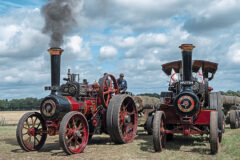The giant tractors from Ford’s FW Series
Posted by Chris Graham on 16th April 2024
Jonathan Whitlam looks at the ‘big ones’ from Ford’s FW Series; the giant tractors from Steiger, Versatile then Steiger again.
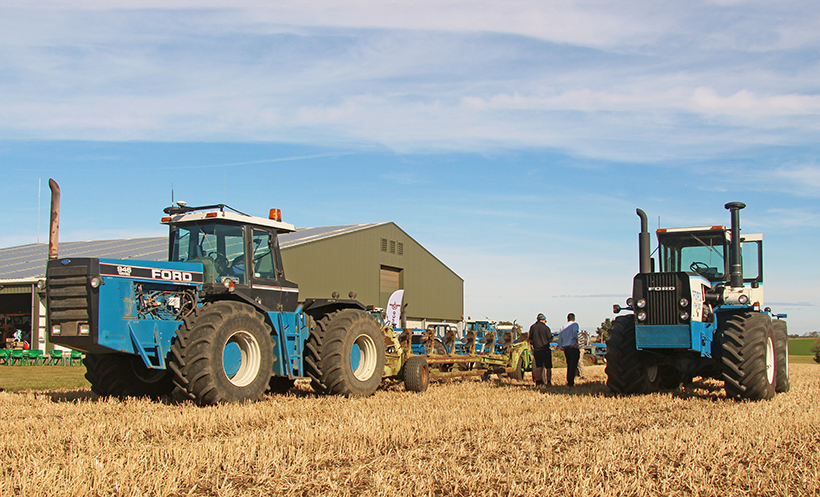
Ford’s FW Series: When Case IH bought Steiger in 1986, the Ford FW-60 was still being sold in the UK, but was soon replaced by the Ford 946 – a tractor produced by the Canadian Versatile company that had been acquired by Ford New Holland in 1987.
In 1977 the Ford Motor Company launched a new, four-model, high horsepower, articulated four-wheel-drive tractor range in North America. Built for Ford by Steiger, in Fargo, North Dakota, the four tractors provided more powerful options above the 153hp 9700 that was the largest tractor Ford produced at that time, and gave Ford dealers something to sell in what was a very important and growing sector of the marketplace.
Designed for the wide open North American plains, the FW range had a limited impact due to stiff competition from other manufacturers such as John Deere, International Harvester, Versatile and, of course, Steiger itself. However, when it came to the UK, this was a new area of the tractor marketplace; one in which Ford believed it could make an impact. The result was the introduction of the FW-30 and its success was such that it would soon be followed by the largest of the original American range, the FW-60.
Some FW facts
In this short series of articles, we’ve looked at how the original four American models of the Ford FW Series were launched in North America, and then how the FW-30 and FW-60 were introduced, with differences, into the UK. By the middle of the 1980s, only the FW-60 Automatic was being produced and it proved to be the last of the line.
So, to sum up the story in a little more technical detail that I didn’t fully cover earlier, and to clarify a few points, let’s look once again at an overview of the Ford FW tractors, with particular reference to the tractors that Steiger produced under its own name (the difference between the two being quite marked).
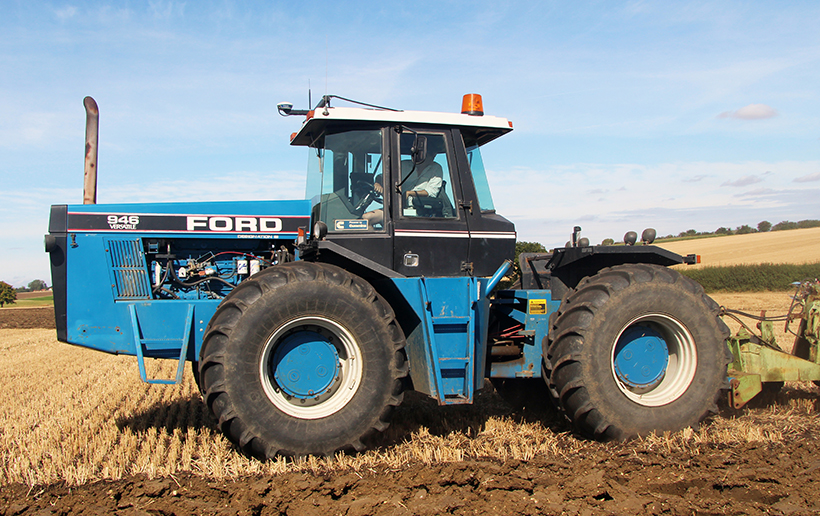
The Ford Versatile 946 was the only model of a four-model range offered in the UK, and was a good replacement for the FW-60. It used the same six-cylinder Cummins powerplant that had been at the heart of the latter FW-60s.
It was the Steiger Series III ‘PT’ narrow-frame machines (and not the ‘ST’ wide-frame as I stated in my first article), that were used as the basis for the Ford FWs. The ‘PT’ range of Steiger tractors was introduced in 1977, featuring a frame 39in wide and with a wheelbase of 132.50in. This compared to the ‘ST’ Steiger that was 44in wide and offered a 128in wheelbase.
The ‘ST’ Steigers also incorporated a patented feature called the ‘Swinging Power Divider’, which reduced driveline angles during a turn and, therefore, increased overall mechanical longevity and reliability. The designers also incorporated a substantial ‘yoke’ linking the front and rear bogies, whereas the Ford FW models used a new ‘yolk’ design that was markedly less substantial in size. The Ford FWs didn’t feature the ‘Swinging Power Divider’ but simply had a conventional, rigidly-fixed drop ‘box, that could be further augmented to provide twice the number of gears available from the standard, 10-speed set-up.
Swinging power divider
Not incorporating the ‘Swinging Power Divider’ made the Ford FWs cheaper for Steiger to build, and cheaper for Ford to buy. While a linkage could be fitted as an option on the ‘ST’ range, a power take-off option wasn’t available on these models. It was only offered on the ‘PT’ machines that were used as the basis for the Ford FW series. Steiger developed the ‘PT’ series to give a greater flexibility of design for those farmers who wanted the addition of a PTO.
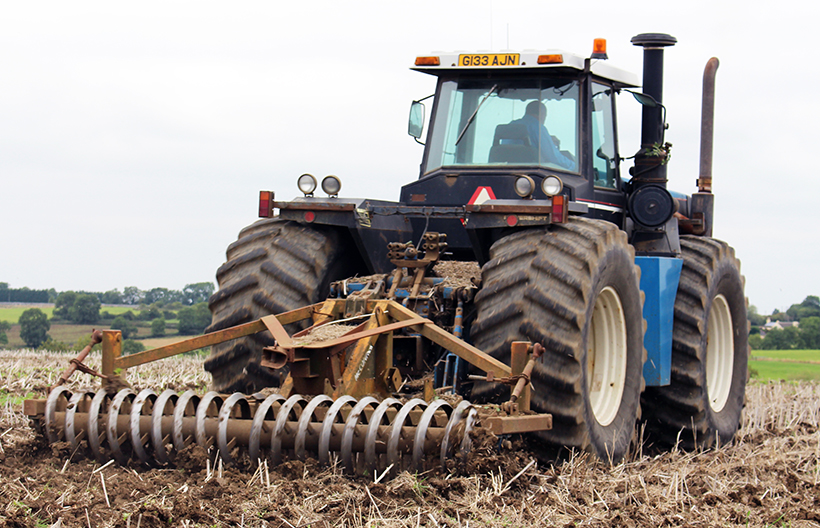
The Versatile design looked more modern than the older Steiger machines that had formed the FW range, with a cab that had a larger glass area. These were the Versatile Desgination-6 machines that had just been launched before the company had been taken over by Ford.
This took the form of a hydraulically-driven unit, offering 57hp at 540rpm or 105hp at 1,000rpm. This set-up was fully independent of the tractor’s driveline and was, therefore, able to accurately maintain these PTO ratings over a wide range of engine speeds; something that would have been unachievable with a mechanically-driven system. In any case, the Steiger design was such that the fitting of a direct, mechanical drive was all but impossible, anyway. Sadly, though, the system wasn’t a huge success, possibly due to the limited power available at the output shaft.
While Steiger’s own ‘PT’ tractors were available with several different manufacturers’ engines – usually in the form of straight six-cylinder units – those produced for Ford as ‘FW’ models, were exclusively fitted with Cummins V8 903 engines in all but the FW-20, the baby of the range that was never sold in the UK. This particular model used a Cummins V8 555 engine. Since the Cummins V8 approach was standard across the original FW range, it may again have also reduced the cost to Ford, and offered obvious benefits with regard to parts inventory.
Jutting exhausts
It’s also interesting to note that on Ford FW tractors, because the frame is narrower than on the Steiger ‘ST’, the exhaust manifolds jut out slightly to the sides. This is why the front of the mudguard support has a crank in it vertically, and a steel, expanded-mesh safety screen fitted to protect unwary operators working around that area of a hot engine.
While Ford FW 60 tractors were imported to the UK from 1980, and had a turbocharged version of the Cummins V8 903 engine, revamped models sported a Cummins ‘Big Cam’ straight-six motor producing 325hp from 1985 onwards, with the option of an automatic transmission being made available from 1986. Tractors equipped with the latter can be identified by the revised front frame profile, as well as the ‘Automatic’ decal, of course.
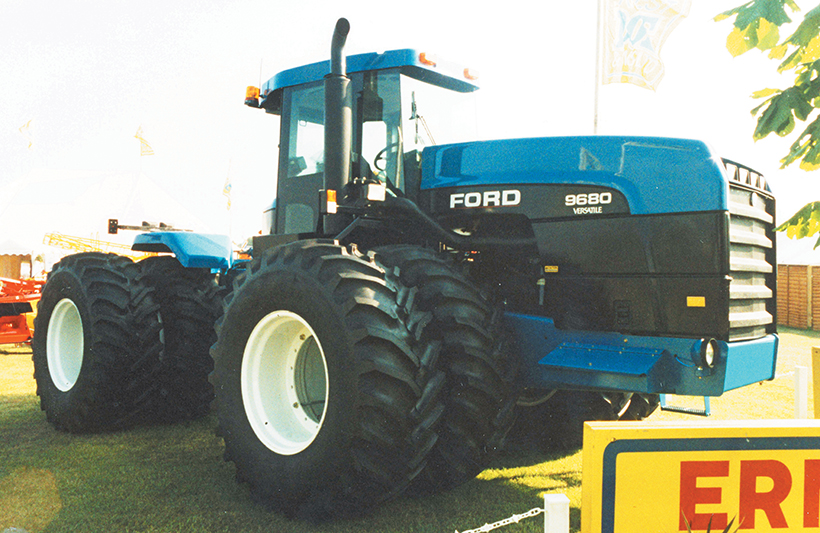
The Versatile design of 4WD tractor evolved into the 80 Series, by which time it was still badged as a ‘Ford’, but a ‘New Holland’ badge was fitted on the front radiator after Fiat acquired Ford New Holland in 1991.
This revised frame profile may have been incorporated to mitigate the increased leverage effect when the large-capacity, straight-six engine was fitted to later FW-60 tractors.
The axles on the ‘PT’-derived Ford FW tractors were fitted with Steiger’s own S 34 axles, which only had three pinion outboard reduction units versus the Steiger/RABA 598 dual, five-pinion outboard planetary units on the ‘ST’ range; again presumably reducing the cost to Ford.
The front bogie frames were also different between the Steiger ‘ST’ and its ‘PT’ counterparts; the latter, of course, included the badge-engineered Ford FW machines. On Steiger ‘ST’ front bogie frames there’s a split junction near the front of the frame – just forward of the tyres – presumably to facilitate engine and transmission installation. The shorter, additional part of the forward frame, behind the front grille, incorporates a hydraulic oil tank, for the remote lines at the back of the tractor to actuate various hydraulic functions on implements.
A small set of access steps is attached to the front frame, and positioned such that it bridges the two sections of the assembly. On the Ford FW tractors, the front bogie frame is continuous, with no ‘split’ as with the ‘ST’ types discussed earlier.
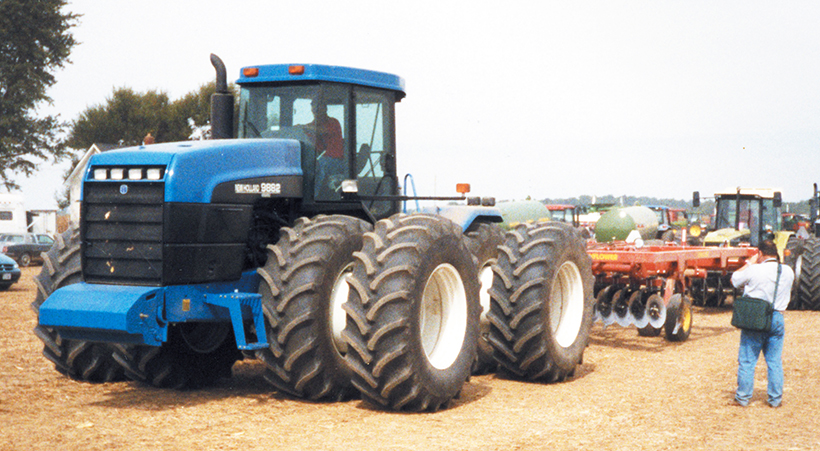
The new design of Versatile artic tractor developed further with the launch of the 82 Series as seen here at a demonstration in North America. (Pic: Paul Reeve)
With the Ford FW badge-engineered Steigers being based specifically on the Steiger ‘PT’ Panther Series III tractors, there were also two other tractors in the ‘PT’ range, namely the Bearcat and the Cougar, which used Caterpillar 3306T and Caterpillar 3306TA engines rated at 225 and 270hp, respectively. These engines were both inline, straight-six units, and only the ‘PT’ Panther 350 used the Cummins V8-903 turbocharged engine, upon which the original Ford FW-60 was based. Other differences on the ‘PT’ Bearcat and Cougar tractors were that they utilised Steiger/RABA 598 dual planetary five-pinion, outboard hub-type axles.
Giants in Britain
The early 1980s saw the Ford FW range all-but dominate the market for high-horsepower tractors in the UK; yes, it was a small niche market but, with John Deere offering its two large machines, Offchurch Tractors importing Steiger models, and Fiat selling large Versatile machines in its own branding, the FW tractors held up very well against the competition, leading to the fact that 145 units had been sold here by the time Ford ended sales in 1987. That’s a lot of very large tractors and, even though sales had tailed off very significantly by the end, the tractors that had been sold were still enjoying a very productive life on farms across the UK, either with their original purchasers or with second owners.
Many of those in the secondhand market soon realised that the Ford FW represented very cheap, efficient power, and many of these machines enjoyed very long and productive lives with second, third or more owners. They represented powerful prime movers for primary cultivation, and for use on the larger cultivator drills, like those produced by Vaderstad, that were becoming popular at that time with large-acreage cereal growers.

The 84 Series was the final incarnation of the Versatile tractor under Ford ownership, launched in the very same year that Fiat bought Case IH, leading to the Versatile factory – and product line – being sold off.
At the beginning of the 1990s, the only thing that threatened the role of the Ford FW was the rise in popularity of rubber-tracked, high-horsepower crawlers, such as the Caterpillar Challenger and the Case IH Quadtrac (itself based on later Steiger designs, after Tenneco bought Steiger in 1986, and merged it with JI Case).
The fact that Case owned Steiger obviously meant that the Ford FW’s days were numbered by 1986, although a few of the last machines were sold during the following year. However, big developments at Ford were set to result in tractors that would wrestle the mantle from the FW. These were very different machines thanks to being based on Steiger’s biggest US competitor at the time, Versatile.
The Versatile replacement
Versatile was a similar company to Steiger in many ways, although based in Winnipeg, Canada, rather than the USA. It had become well known for its range of big, articulated four-wheel-drive tractors during the 1970s and ‘80s, and had been represented in Europe thanks to a badge-engineering exercise in conjunction with Fiat.
The Ford Motor Company made big news at the end of 1986 with the announcement that it was purchasing the New Holland farm equipment company and merging it with its tractor operations to form a new company from the beginning of 1987, called Ford New Holland. Later that same year, the new business acquired the Versatile company and its range of big tractors, which gave Ford its own new range of high-horsepower and articulated 4WD models to repaint and rebrand as Fords.

The T9000 range followed the TJs, and was then developed into the T9 line-up. All these New Holland tractors were based on the Case IH product built at the old Steiger factory, and some were offered in Britain before finally being withdrawn from the European market.
Of several models sold in North America, only the 946 would be brought to the UK, replacing the FW-60, powered by the 325hp Cummins six-cylinder engine from the most recent incarnation of the FW-60. Although sales in Britain weren’t huge, several units did find their way onto British farms, often replacing older FW models. The 946 remained on sale until the arrival of the all-new 80 Series, which came along at the end of 1993, by which time the Ford name was being rapidly phased out in favour of New Holland, thanks to the takeover of the company by Fiat, in 1991.
With the arrival of the Versatile-built 80 Series of four models, it was the 9680 that was chosen for sale in Britain thanks, once again, to its power output of 325hp from a Cummins NTA-855-A six-cylinder engine. The new Versatile design was taken further with the improved 82 Series from 1997, with the 360hp 9682 replacing the 9680 in the UK market. The final incarnation of this range arrived in 1999 with the 84 Series; the 360hp 9684 taking over from the 9682 in Britain.
Back to Steiger, again!
However, this latest version was to have a very short lifespan thanks to the fact that, in 1999, Fiat bought Case IH and, to meet government legislation, had to divest itself of one of its articulated tractor plants, now owning both Versatile and Steiger. Versatile was the one to go and this then led to the FW legacy once again reverting to Steiger, with the original TJ range being replaced by the T9000 line-up in 2008.
Blue articulated tractors were once again being sold in Britain that had been built in the Steiger factory. But they didn’t feature the ‘Ford’ name, although they do fit in the same family of models. Today, the newer T9 tractors are no longer offered in the UK; the only option being the Case IH Quadtrac models that are still built in the Steiger factory. Luckily, there are many Ford FW tractors still at work in the UK, often semi- or fully-retired, but still getting to stretch their legs at least a few times a year.
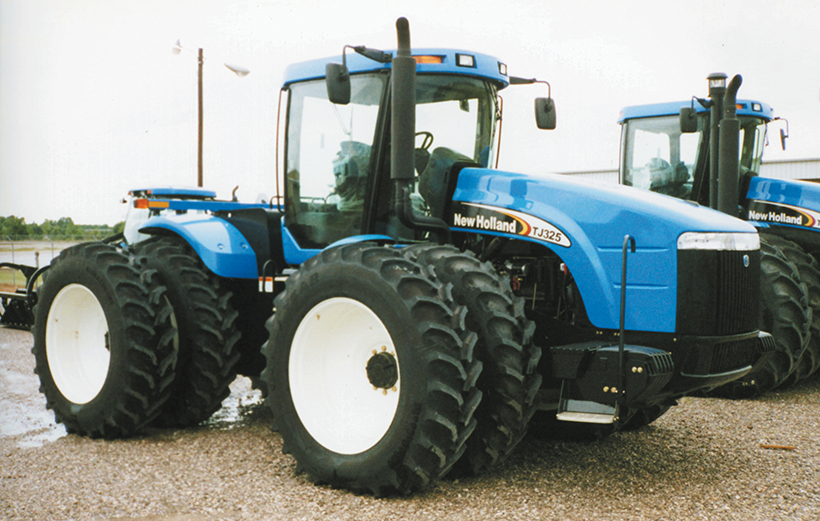
The TJ range was a ‘quick fix’ that enabled the blue New Holland tractors to stay competitive in the articulated 4WD tractor market, and was based on the Steiger Case IH design. These weren’t officially offered in the UK (Pic: Paul Reeve)
In their native North America, the Ford FW tractors didn’t have a huge impact on the marketplace, as many farmers preferred to stick with the green Steiger machines they already knew so well. But this was certainly not the case over on this side of the Atlantic; the FW range changed the way farmers in the UK looked at larger, articulated 4WD machines, and helped to create a market for itself as well as pave the way for future big tractors in Britain. Whichever way you look at it, the Ford FW tractors changed the way British farmers looked at tractor power – and changed it forever!
I’d like to extend my sincere thanks to Neville Barbour for the invaluable additional information he provided during the production of this article.
This feature comes from the latest issue of Ford & Fordson Tractors, and you can get a money-saving subscription to this magazine simply by clicking HERE




